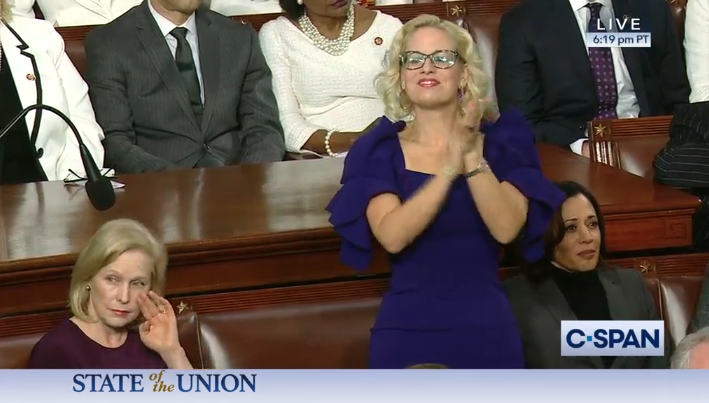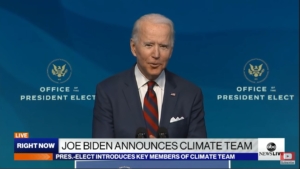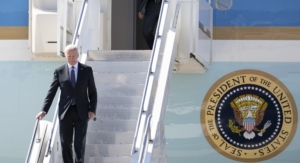The Great Compromise May Be Dead
Twenty years ago, a newly inaugurated President George W. Bush faced an evenly split Senate, a slim House majority, and volatile public sentiment after a hotly contested, divisive election result. Securing legislative victories would require bipartisanship and compromise, American traditions dating as far back as The Great Compromise – negotiated over the 4th of July weekend of 1787 – that shaped the U.S. Constitution.
Today, President Joe Biden faces a very similar political landscape. Yet the media, who once exalted compromise as a virtue, now treats it as a deterrent to progressive aims. This new narrative has emboldened the most leftward partisans of the Democratic Party, who are convinced they enjoy a mandate that is not evident in the makeup of this Congress or the voting coalition that elected Joe Biden.
For companies and industries seeking compromises borne out of bipartisanship to advance their policy priorities, this landscape is fraught with challenges. Central to those challenges is the question of whether bipartisan compromise can survive in the age of polarized 24-hour news and social media punditry. If it cannot, what does that mean for public affairs professionals trying to navigate Washington’s morass for their organizations and clients? Here’s what you need to know.
Subscribe to Receive Insights
"*" indicates required fields
The Media, Who Once Celebrated Moderates as Mavericks, Now Portray Them as Roadblocks to Progress
Throughout most of political history, the public and the press have expected elected officials to set aside ideological differences to deliver real results for their constituents and the country. When government is closely divided, this bipartisanship often takes the form of opposition to the majority’s policy proposals and seeking to temper its more partisan impulses.
President George W. Bush discovered this reality firsthand as he tried to advance his agenda. At that time, the media cast his attempts to score legislative victories as extreme while pushback from his own party was sensible, civic-minded, and even brave. When Vermont Senator Jim Jeffords switched his political affiliation from GOP to Independent, he earned glowing media coverage that warned Republicans their pursuit of GOP priorities was alienating moderates. Meanwhile, Sen. John McCain (R-Ariz.) garnered media favor for his independent streak that imposed political obstacles on the new Republican president.
For the past two decades, the media have openly pined for a “radical center” built by the “moderate middle” of “politically homeless” who they say simply seek solutions to the problems facing our country. They heaped praise on the various bipartisan “gangs” who crossed party lines to solve big problems facing the country, and in 2020 argued disaffected Americans eschewed the divisive tone of the Trump Administration for then-candidate Biden’s message of unity and a return to normalcy.
Then Democrats’ narrow 2020 electoral victories left the fate of President Biden’s agenda in a 50-50-split Senate with two moderate Democrats: Sen. Krysten Sinema (D-Ariz.) and Sen. Joe Manchin (D-West Virginia). Once revered as honorable and constructive, moderation, standing athwart the Democrats’ agenda, is now reviled as obstinate and regressive. When Sen. Manchin indicated he would not support progressives’ proposed overhaul of federal voting laws, one liberal commentator accused him of upholding “white supremacy” as a “cowardly, power-hungry white dude,” while The Washington Post’s Eugene Robinson called him a “villain” for refusing to eliminate the filibuster. Sen. Sinema has endured similar derision, with The New York Times lambasting her for standing in the way of “major legislation,” arguing that while her predecessors took courageous stands in the tradition of compromise, Sinema merely “delights in trolling” her fellow Democrats, void of any discernible principles.
The Media Keeps Advancing the Narrative of a Progressive Mandate, but Congressional Math and Biden’s Electoral Coalition Suggest Otherwise
This new media depiction of bipartisanship as a bug, rather than a feature, of democracy is built on the premise that progressives have a governing mandate from voters. Yet that is simply not the case. The U.S. Senate is split evenly, while Democrats have the slimmest House majority in two decades – just nine seats. While Biden won the presidency, many Democrats considered the 2020 elections a “failure,” with voters who rejected President Trump also rebuffing candidates who promoted the Democrats’ most leftward policies.
Critics say the media live in a progressive social media bubble that inoculates them from genuine voter sentiment, even within the Democratic Party itself, with election analysts noting platforms like Twitter are largely unrepresentative of mainline Democrats. That bubble gives “Very Online” reporters and commentators a poor understanding of what actually moves voters and those who represent them. This warped view of electoral reality makes it harder for the agenda-setters of the political media to accurately assess the landscape in front of them. Indeed, the moderates they decry, like Sens. Sinema and Manchin, actually better mirror the overall electorate (as well as a significant swath of Democrats) than the progressive voices the media regularly insists Biden must appease.
Industries Hoped Democrats’ Slim Majorities Would Foster Productive Bipartisanship, but They Got Big Demands From Progressives Instead
The media narrative of a progressive mandate may not match up to governing reality, but it has not stopped liberal Democrats from pushing their party ever leftward. Their policy wish list is long and it is, by most accounts, far outside the political mainstream. These days, they are advocating for major legislative overhauls like the Green New Deal and student loan cancellations. While the Congressional Progressive Caucus promises “sweeping, transformative change,” it seems that neither their Democratic colleagues nor the voters are seeking such extremes.
Neither is the business community. When a governing majority is incredibly slim, as it is now, industries desire the productivity and reliability that bipartisanship and moderation provide. In contrast, intense political polarization often creates instability that industries try to avoid. No matter who is in power, there are still major policy problems and big legislative priorities that businesses need addressed.
Look no further than the full court press from public affairs professionals across a variety of industries on the infrastructure spending package. As we noted during the transition, this issue could “be Groundhog Day for obstruction or Ground Zero for compromise,” depending on how the parties approached it. While industry representatives are pushing moderates on both sides of the aisle to find a compromise, they more overcome an increasingly antagonistic media tone toward the very lawmakers whose support is crucial for success. With significant policy challenges on topics ranging from health care to energy, businesses are hoping that Democratic leadership and The White House will ignore calls from progressives to abandon bipartisanship in exchange for advancing an activist-oriented agenda. To convince them to do so will require challenging the accepted wisdom in the media and overcoming widely-reported (mis)perceptions of reality.



